In the midst of growing discussions around dog nutrition, particularly the question, “Is kibble bad for dogs?” I’ve taken a nuanced stance by opting for a diverse diet for my furry friend.
This decision stems from a deep dive into the world of canine dietary options, where I’ve weighed the benefits and limitations of kibble against those of raw and wet foods.
So, here’s the short answer…
Kibble is not inherently bad for dogs and can provide a balanced diet when high-quality and meets AAFCO standards. However, individual dog needs vary; some may require specific diets due to health issues. Consult a vet for personalized advice.
My journey through the maze of pet nutrition information has convinced me that no single type of dog food holds all the answers. Instead, I’ve learned that a balanced approach, tailored to my dog’s specific health needs and preferences, is paramount.
This holistic perspective ensures that my dog enjoys the best dietary options without the pitfalls of a one-size-fits-all feeding strategy.
This journey has been eye-opening, to say the least, and I’ve discovered that the debate over kibble isn’t just black and white.
Let’s discuss!

Is Dry Dog Food Bad?
Kibble bashing is rising just as the raw dog diet and wet food are returning in fashion. I feed my dog a mixed diet and have extensively researched all types of dog food. The reason why I don’t rely on kibble alone isn’t that it is bad, though.
Let’s consider the argument that dry dog food is bad.
Dry dog food is bad for a dog with sore gums, poor dental health, or if the dog prefers wet dog food. It can also be bad if it makes up 100% of a dog’s diet and lacks the nutrition required by the dog’s life stage.
But none of this makes dry dog food inherently bad.
You just need to be more careful about the quality of the kibble you select and ensure it meets all the nutritional requirements laid out by the Association of American Feed Control Officials (AAFCO).
We’ll now look at all the possible drawbacks of selecting poor-quality kibble.
Disadvantages of Kibble
In this section, we’ll look at the main disadvantages of dry dog food. Since premium dry dog food is as healthy as commercial dog food can get, I’ll not focus on the best of the best.
Instead, I’ll take a cautionary look at the drawbacks of cheap dry dog food bought and fed carelessly. You will find the flipside for each disadvantage in its respective section.
1. It Contains Processed Ingredients
The most significant drawback of dry dog food is that it is not 100% natural. It might contain 99% natural ingredients, but it still needs to be processed to be dry.
Kibble is often formulated to be convenient for dog owners more than it is meant to be suitable for dogs.
Most often, it is economically convenient. The problem with that is the quality of the ingredients used.
Processing can mask the true quality of the ingredients used. Often, these are “feed-grade” ingredients that are equivalent to leftovers.
Processing methods can turn them into kibble, but that doesn’t make the contents fresh or as nourishing.
THE FLIP SIDE:
Natural dry dog food is a huge market, and you can easily get products that don’t contain over-processed or feed-grade ingredients.
I’m a proponent of cold-pressed dry dog food, which I serve to my dog. Unlike kibble cooked at high temperatures, cold-pressed food is made at lower temperatures.
This method preserves more essential nutrients often lost in traditional cooking processes. It looks and feels just like kibble but is healthier.
Check out the photo of my dog below, showing off her favorite food. Just look at that tongue!
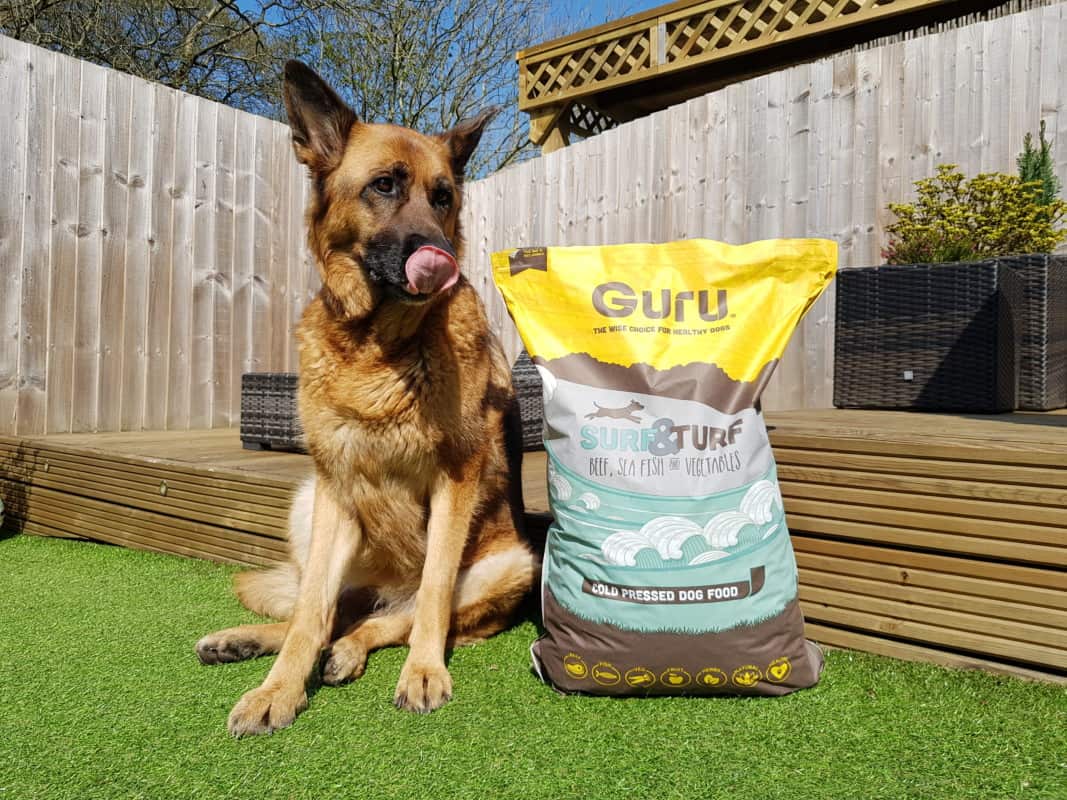
2. It Lacks Fiber
Kibble can hit the marks on protein and carbs, even though it is not made from prime ingredients. However, fixating on macronutrients is the best kibble can offer.
Even though we know that dogs need other nutrients and supplements besides protein and carbohydrates, most kibble makers cannot afford to deliver anything besides the macros.
One substance often derived from macronutrients is fiber. And while your dog can get plenty of fiber from regular sources of carbs, he cannot get it from kibble.
Kibble isn’t usually fiber-rich, and since fiber is essential for digestion, its lack in your dog’s diet can result in digestion issues.
THE FLIP SIDE:
Mix fiber-rich foods like pumpkin to ensure your dog gets enough fiber.
My article on what to mix with dry dog food can help you with this.
3. It Contains High-Starch Carbs
Starchy carbohydrates can pump your dog full of energy, but excess energy can lead to obesity.
High-starch carbs are the most common carbohydrates in commercial dog food. Dry dog food is a major culprit since storing simple carbs in dry kibble form is more practical.
THE FLIP SIDE:
Add freeze-dried dog food to your dog’s diet to lower the concentration of high-starch carbs.
Raw freeze-dried dog food contains 97% meat and organs and no fillers. It can improve the health profile of your dog’s diet if it makes up 25% to 50% of his food.
You can check out more info about mixing kibble with raw here: Can You Mix Kibble With Raw Dog Food?
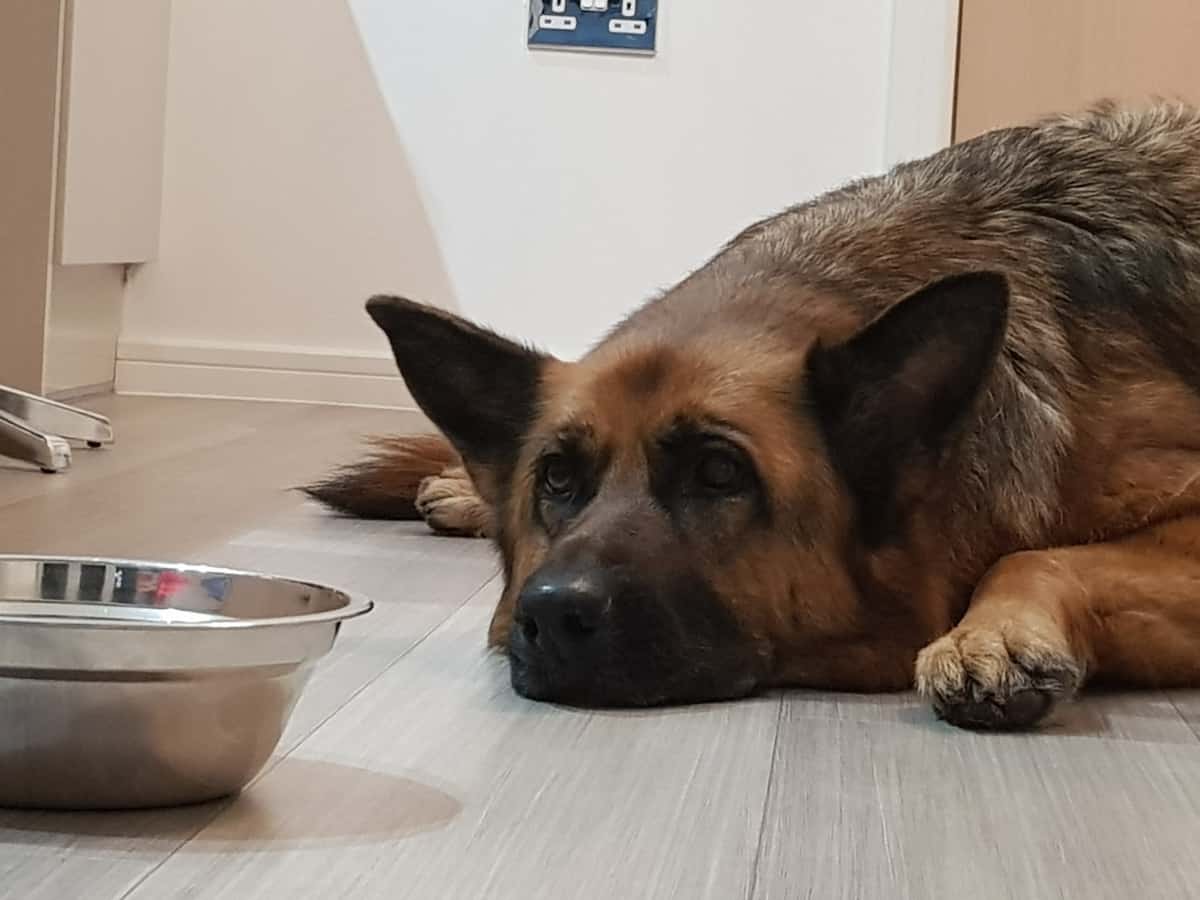
4. It Isn’t Holistic
Kibble isn’t dangerous for dogs. It is bad for them. And the difference is that one can safely incorporate kibble into a dog’s diet. I feed my dog kibble, too.
But when I say kibble is bad, I mean that one can easily make mistakes with a kibble diet.
The most common mistake you can make with a kibble diet is assuming that kibble takes care of your dog’s dietary needs.
That is not the case.
Kibble is not holistic, and plenty of micronutrients and supplements can be added to your dog’s diet.
The fact that kibble isn’t holistic is not an issue if you ensure your dog’s overall diet takes care of all aspects. But if your dog eats kibble only, then all of the shortcomings of dry dog food can become serious liabilities.
THE FLIP SIDE:
As mentioned, you can mix other food items with kibble to make your dog’s diet more wholesome. Veggies, meats, fish, and fruits are just some examples.
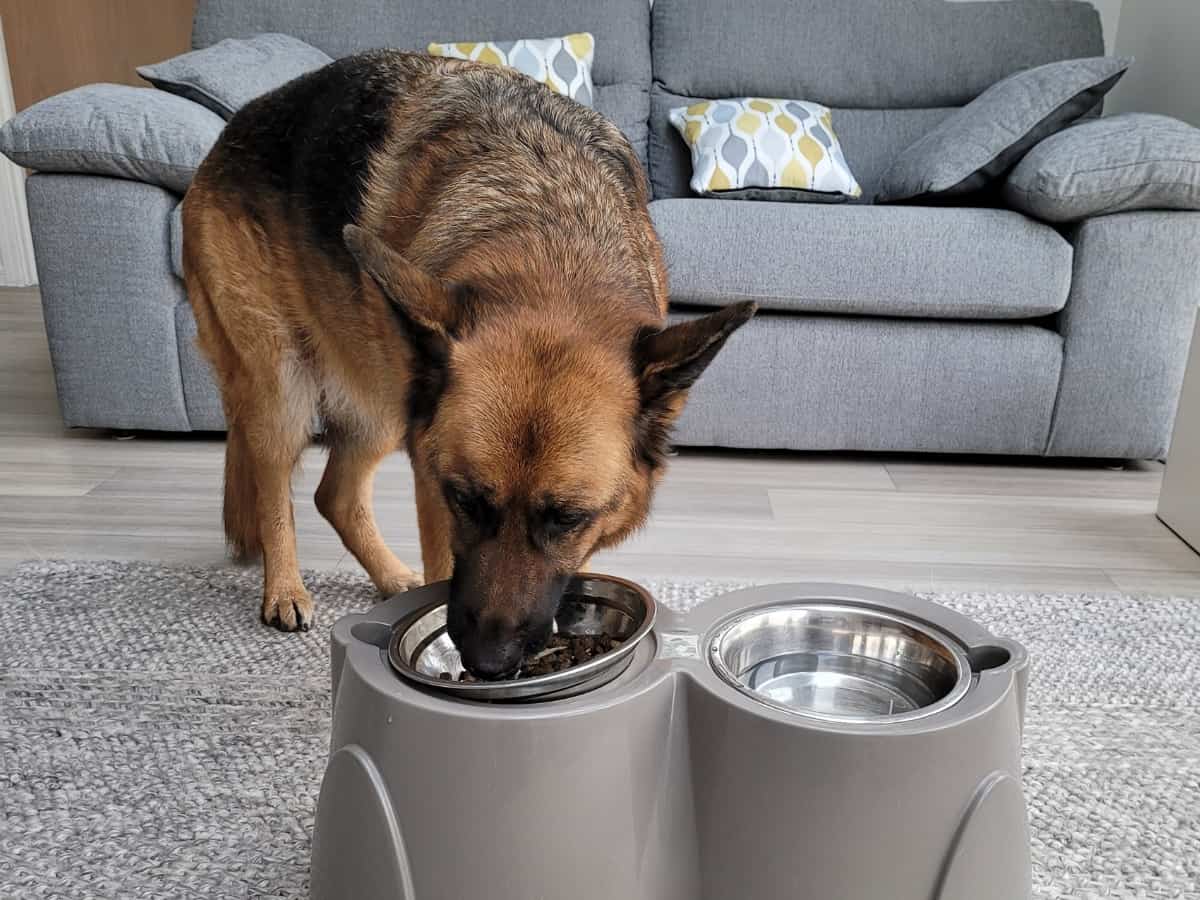
5. Your Dog Might Not Like It
In human food, it is common to see an inverse relationship between appetizing and healthy. Appetizing is usually unhealthy, and what is healthy doesn’t taste as good. In the case of dry dog food, unhealthy food is also not as tasty.
Free of complex carbs, rich nutrition sources, moisture, minerals, and fiber, kibble is unhealthy as the sole food source.
To make things worse, your dog might not even like its taste. The human equivalent of this would be a sugary chocolate bar that tastes like kale!
Not all dogs reject kibble, though. Many dogs like it, but it seems like an acquired taste for most.
How good kibble tastes to dogs also depends on the make of the kibble itself. Not all dry dog food is formulated alike, and some brands are more appetizing than others.
THE FLIP SIDE:
Fortunately, knowing what to mix with kibble can make your dog’s food more flavorful, holistic, and healthy.
Below are photos of my dog Willow showing her dry food mixed with natural yogurt and steak.
You can even add water to dry dog food to increase the aroma and texture and turn it into a yummy gravy!
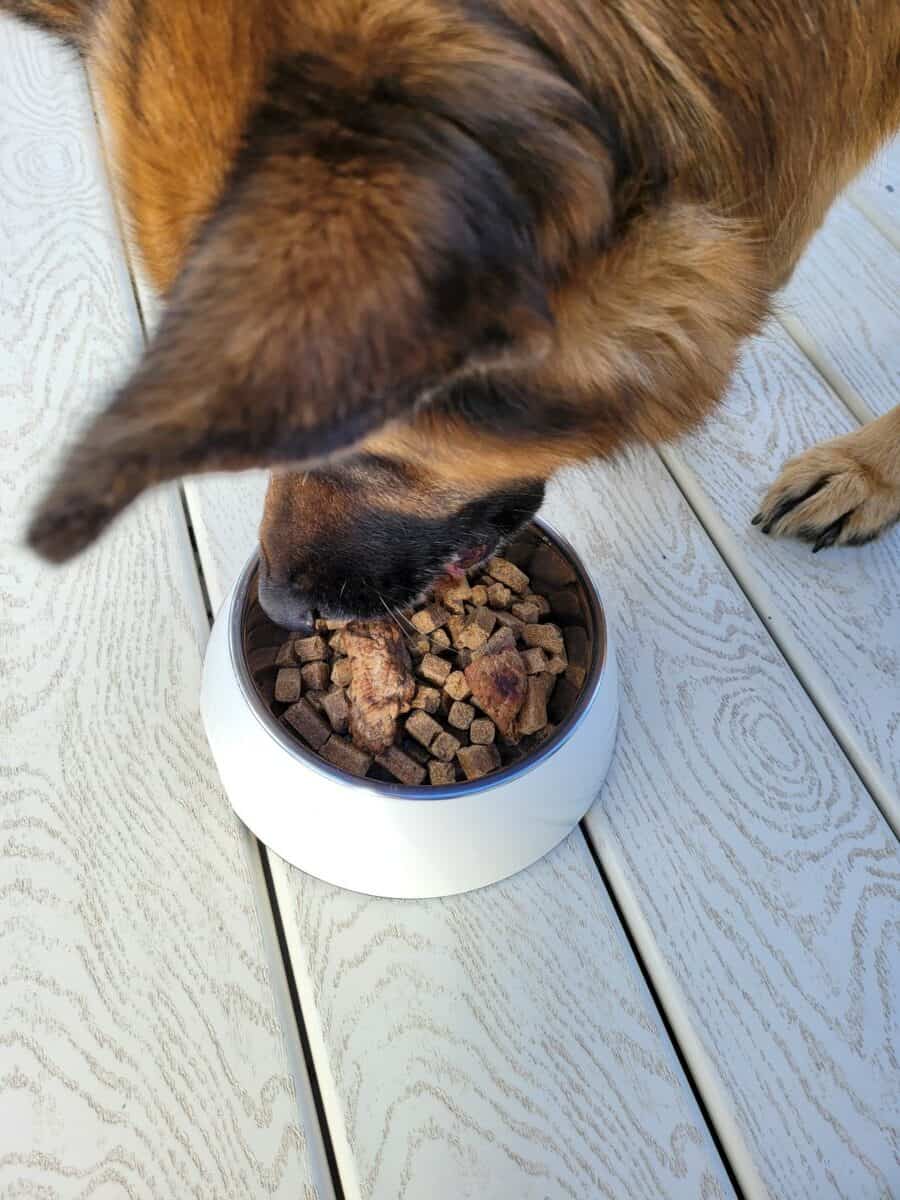
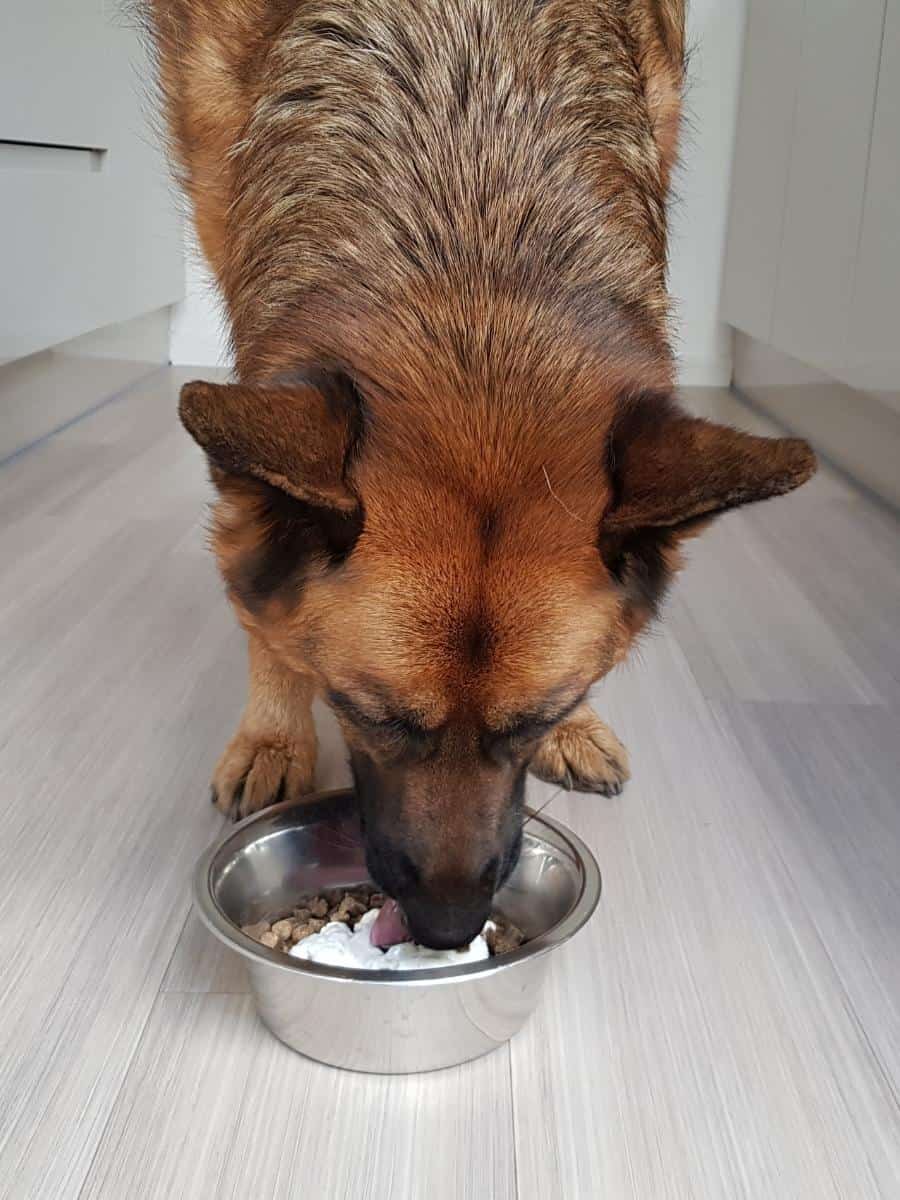
6. It Contains Chemical Preservatives
Kibble is naturally not very appetizing. If you read my post on whether dogs like the taste of their food, you will realize most of their appetite is driven by their sense of smell.
Chemicals are used in dry dog food not just for preservation but also for flavor enhancement.
These chemicals might make kibble more flavorful but are unnecessary junk at best and harmful to your dog’s biology at worst. When you order kibble, make sure it is backed by a trustworthy brand that wouldn’t choose unhealthy chemicals.
THE FLIP SIDE:
Many well-reputed kibble brands choose not to use unhealthy preservatives. Some of them resort to using no preservatives whatsoever.
Choosing the right kibble can offset this problem.
7. It Contains Colors
Almost all kibble is artificially colored. Colorants can be a digestive nuisance at best and harmful to your dog at worst.
Colors are popular in cheap kibble, which is one reason not to be a bargain buyer when it comes to kibble.
THE FLIPSIDE:
Again, choosing the right kibble can help you offset its drawbacks. Some stores have an entire section dedicated to dog food with no artificial colors.
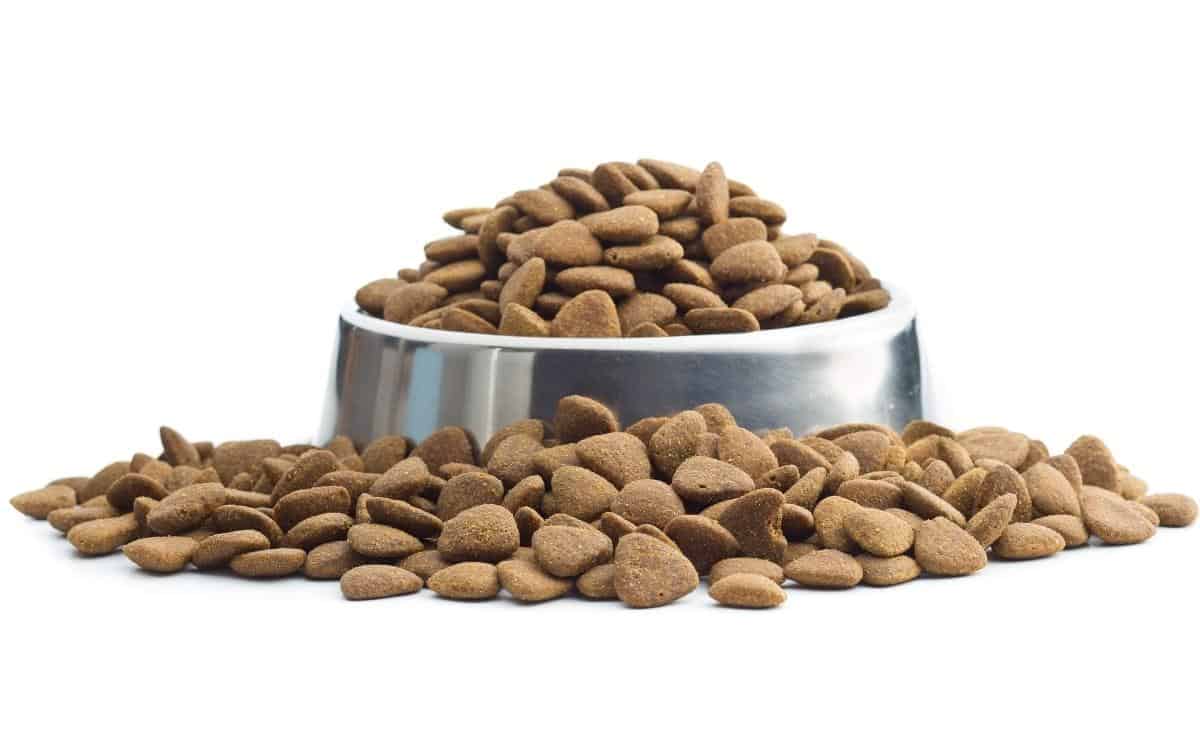
8. It Can Go Bad
Finally, a significant drawback introduces a lose-lose scenario to almost any type of kibble. If kibble doesn’t contain chemical preservatives and artificial ingredients, it can go bad.
Some of the most popular “all-natural” kibble packages go bad long before they are finished. Understanding how to store kibble can help you offset this drawback.
THE FLIP SIDE:
Buy smaller portions of kibble and store it properly.
9. Storage Mites Can Infest It
Dry dog food can attract storage mites, which can thrive in dry dog food containers when even a few kibbles get wet. The wetness of kibble leads to molding, and storage mites consume this mold and multiply rapidly.
Most dogs have a severe allergic reaction to these mites and can start losing hair and suffer from skin inflammation when given a serving of mite-infested kibble.
THE FLIP SIDE:
Make sure the kibble stays dry and store it properly. Avoid buying kibble in bulk.
Final Thoughts
Kibble is not inherently bad for dogs, but it does have serious potential to be bad. If you choose a dry dog food that cannot nourish your dog according to his dietary requirements, he might become obese and unhealthy.
Many bargain brand kibble packages contain preservatives, colorants, and chemical additives. Choose high-quality kibble and mix it with nutritious food to make your dog’s diet healthier.
If you’re still not convinced about the whole kibble debate, you might like to jump to these articles:




